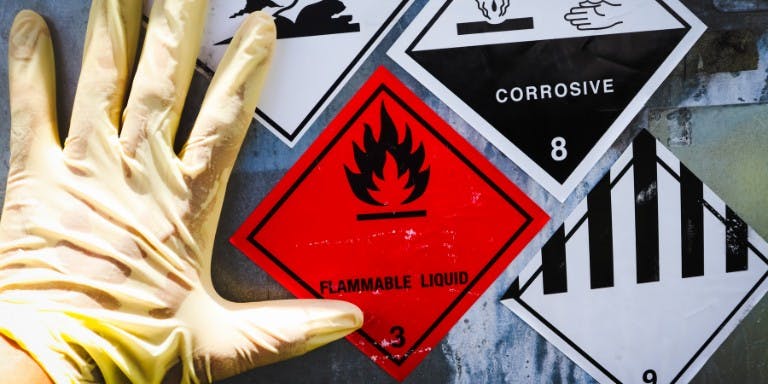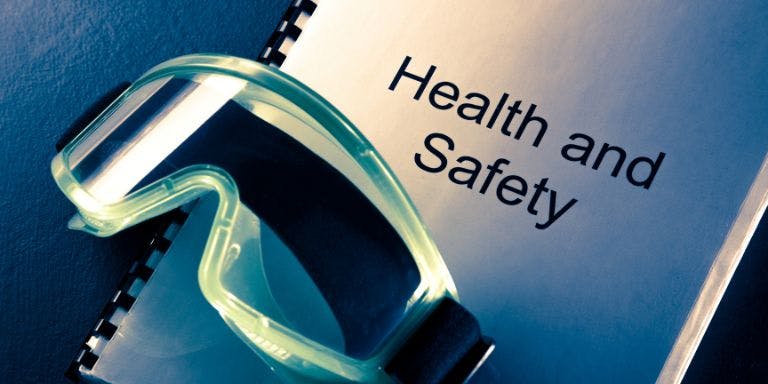First published on Wednesday, July 27, 2022
Last updated on Wednesday, August 21, 2024
Jump to section
- What is health & safety management?
- Health & safety management regulations
- How to integrate health & safety into management into business practices
- Who is responsible for health & safety management?
- Employee involvement and training
- Benefits of effective health & safety management
- Get BrightSafe for all your health & safety management needs
Effective health & safety management is the foundation of any safe and productive workplace.
For business owners and employers of small-medium enterprises (SMEs), understanding and implementing proper health & safety practices is not just a legal obligation, but a key factor in guaranteeing the wellbeing of your team and the overall success of your business.
What is health & safety management?
Health & safety management is about creating a safe workplace by identifying and mitigating risks. In the UK, this involves following regulations like the Health and Safety at Work Act 1974, and the Management of Health and Safety at Work Regulations 1999.
For small to medium enterprises, (SMEs), this means conducting risk assessments, providing safety training, and implementing safety policies. And having end-to-end health and safety software can help with all these requirements.
Doing this not only means your business is complying with legal requirements, but also creates a safer, more productive work environment. A happy, healthy workplace is a productive one!

Health & safety management regulations
In the UK, you must comply with several key pieces of health & safety legislation to ensure a safe working environment.
The main regulations are:
Health & Safety at Work Act 1974: The cornerstone of health and safety legislation.
Management of Health and Safety at Work Regulations 1999: Outlines employers’ duties to manage health and safety.
Workplace (Health, Safety and Welfare) Regulations 1992: Covers workplace conditions.
Provision and Use of Work Equipment Regulations 1998: Ensures safe use of equipment.
Manual Handling Operations Regulations 1992: Addresses risks from manual handling.
Personal Protective Equipment at Work Regulations 1992: Requires provision of appropriate PPE.
Control of Substances Hazardous to Health Regulations 2002 (COSHH): Manages hazardous substances.
Reporting of Injuries, Diseases and Dangerous Occurrences Regulations 2013 (RIDDOR): Mandates reporting of certain incidents.
Noncompliance with these regulations can lead to severe consequences, including hefty fines, legal action, and physical harm to your workforce. We have more about this coming up, but it’s best practice to seek professional health & safety advice or consult the HSE website to avoid legal issues.
How to integrate health & safety into management into business practices
Integrating health & safety into your management practices is essential for creating a safe and productive workplace. Here’s how you can weave these considerations into your decision-making processes:
Ensure that health & safety are top priorities for your leadership team. This sets the standard for the entire business.
Regularly conduct risk assessments to identify potential hazards and implement measures to mitigate them.
Provide ongoing training and resources to keep your team informed about health & safety regulations.
Develop clear health & safety policies and ensure they’re communicated effectively to your team.
Continuously monitor health and safety performance and review policies and procedures to ensure they remain effective and up-to-date.
Make health and safety a part of everyday routine, from planning and procurement to project execution and maintenance.
A proactive approach to H&S is an investment in the future of your business.

Who is responsible for health & safety management?
Effective health and safety management starts with clearly defined roles and responsibilities within your business. Here’s some tips to make sure everyone understands their role:
Leadership commitment—leaders must prioritise health & safety, setting the tone for the entire business. They have to lead by example to foster a culture of health & safety.
Health & safety officers— appoint dedicated health and safety officers to oversee compliance, implement safety policies, and provide competent advice.
Managers and supervisors—ensure managers and supervisors understand their role in maintaining a safe work environment. They should regularly conduct risk assessments and enforce safety protocols.
Staff—every member of staff has a role to play. Encourage them to report hazards, follow safety procedures, and participate in safety training.
Clear lines of accountability are essential. Regular meetings, report mechanisms, and a clear chain of command ensure that responsibilities don’t simply get brushed under the rug.
Having a health and safety tool like BrightSafe’s Responsibilities Navigator helps you assign and track individual responsibilities, making sure a task is never missed again.
Employee involvement and training
Getting your team involved in health & safety is key. Encourage them to report hazards, join safety meetings, and help shape safety policies. When everyone feels part of the process, they’re more likely to follow protocols and take care of their wellbeing.
Regular training is also essential. Keeping everyone up-to-date with the latest practices ensures high safety standards across the board.
Use e-learning platforms like BrightLearn, which offers a range of CPD-accredited courses designed to educate staff on different aspects of workplace safety. Our online health & safety training lets you assign courses and track staff progress, giving you the peace of mind that your team is practicing compliant health & safety and staying informed.
Benefits of effective health & safety management
A safe environment boosts productivity as your team can focus on their tasks without the worry of hazards. Research from the European Agency for Safety and Health at work shows that good health & safety practices are linked to improved performance and profitability, due to reduced downtime caused by illness and accidents.
Effective health & safety management also reduces absenteeism. According to the HSE, millions of working days are lost due to work-related injury and illness.
Plus, looking after your employees just improves their morale. It should come as a shock to no employer that when employees feel their wellbeing is a priority, it leads to higher job satisfaction and lower turnover rates. It can also improve your company’s reputation, making it more attractive to clients and partners.
Get BrightSafe for all your health & safety management needs
Managing health & safety at work can feel a bit impossible at times. But fear not, as BrightSafe makes it a breeze!
BrightSafe helps you safeguard your business from 600+ health & safety risks, reduce hazards with real-time reporting, and ensure compliance with an accurate digital audit trail. Access CPD-accredited online health & safety training, stay updated with the BrightSafe app, and access 24/7 support from qualified health & safety experts.
Ready to streamline your workplace safety? Book a demo today to see BrightSafe in action.











